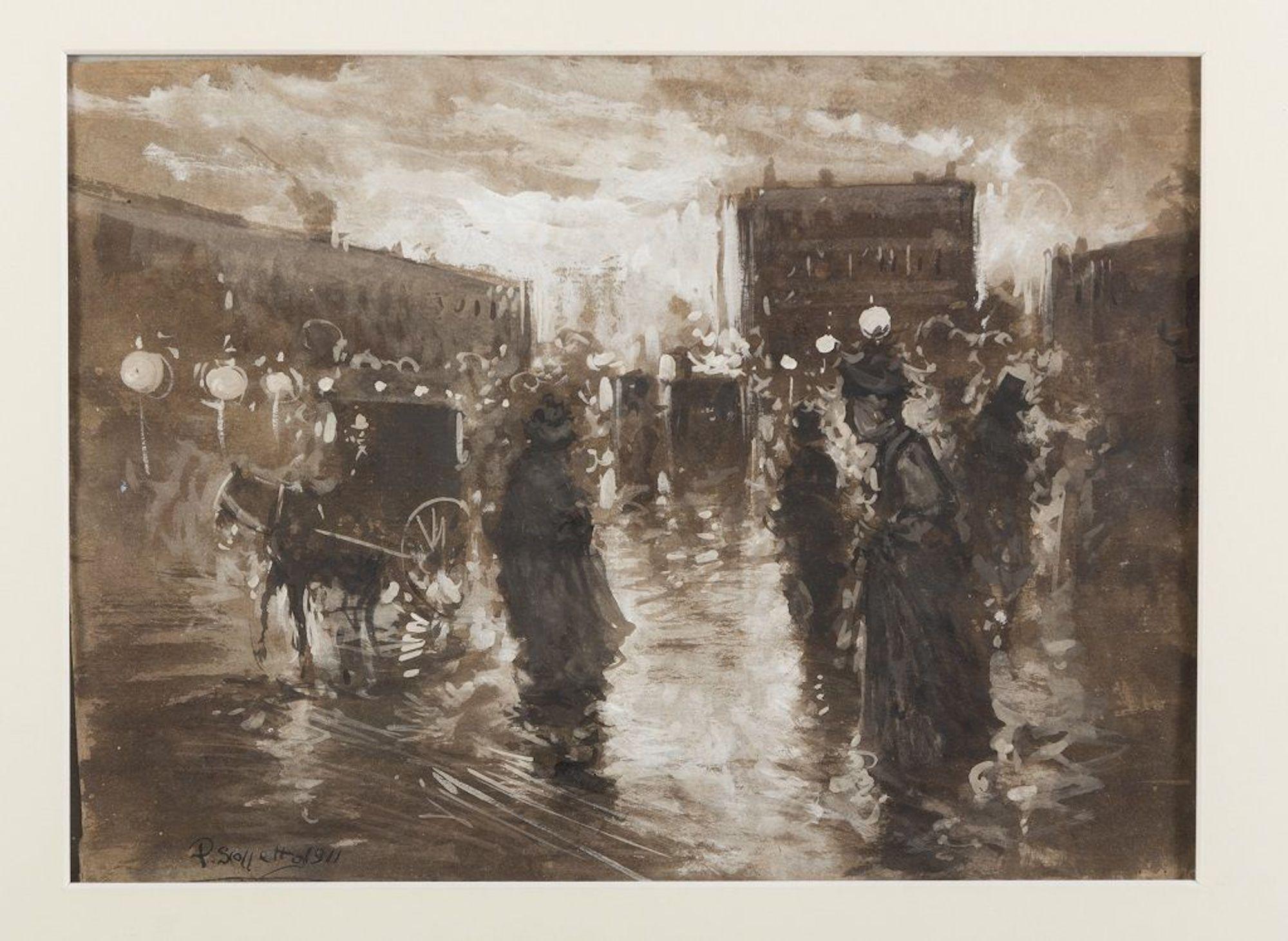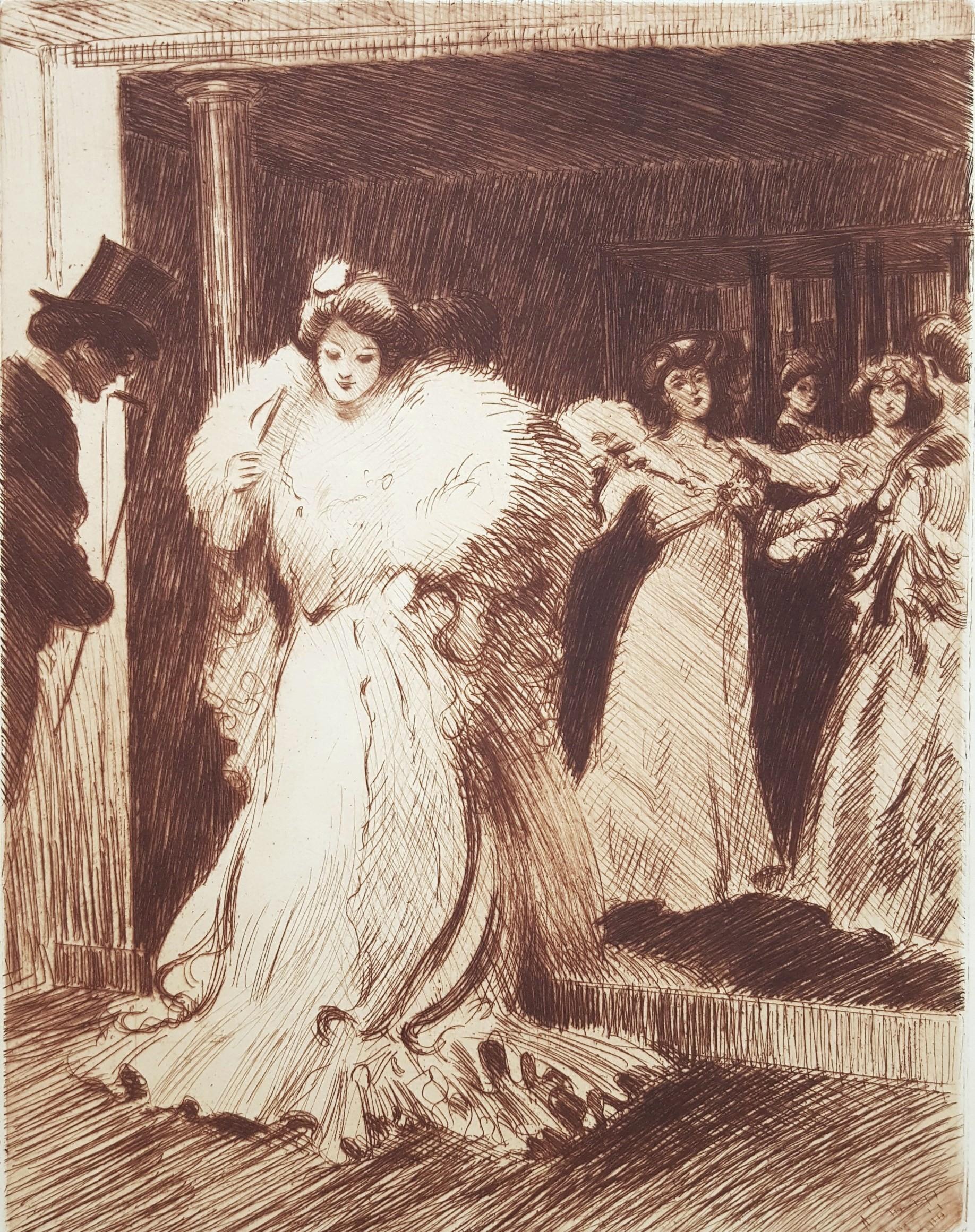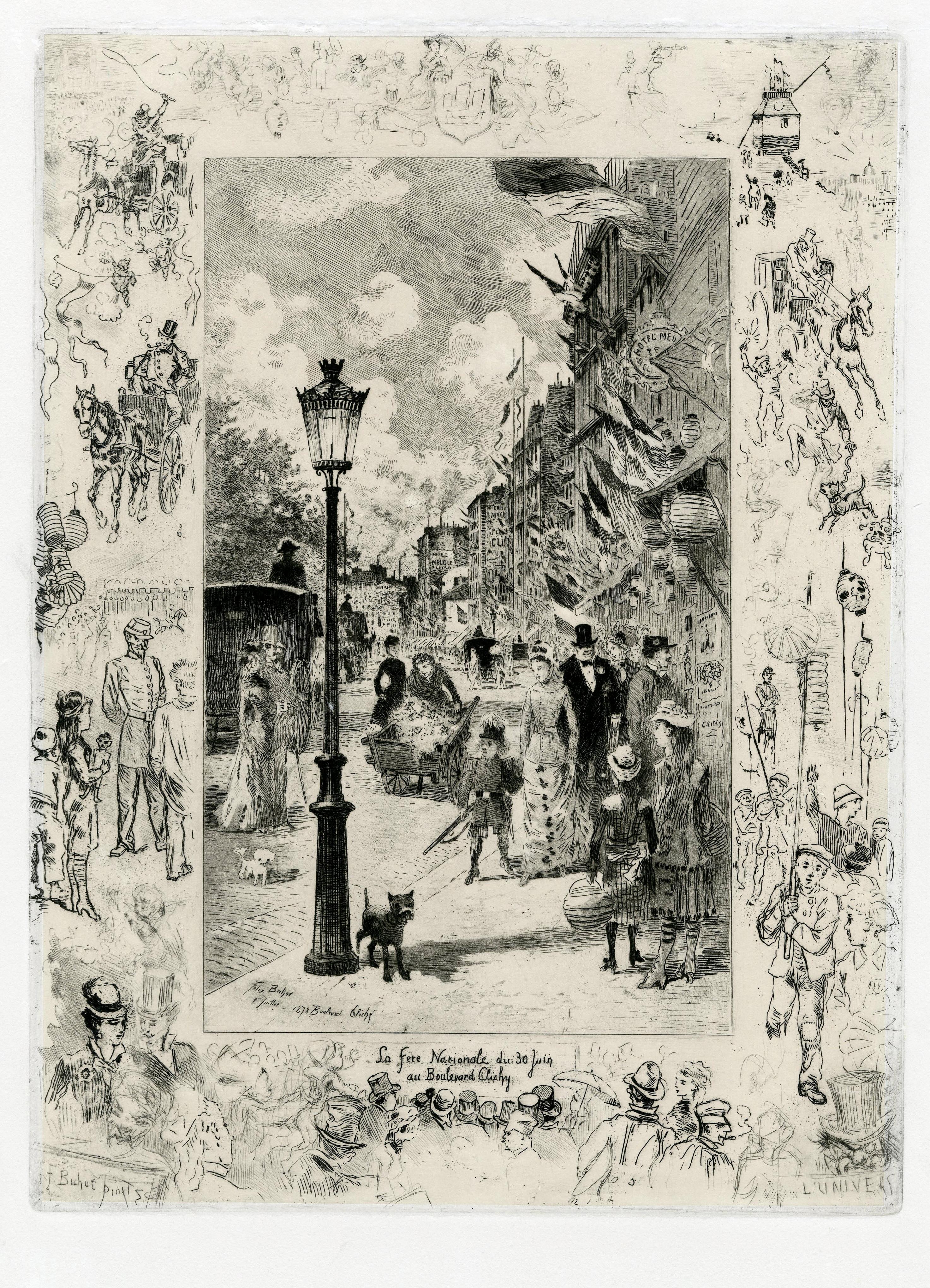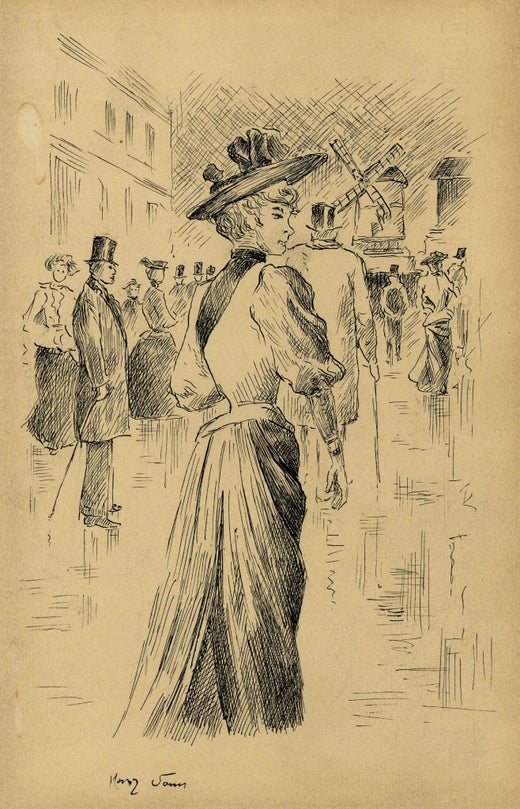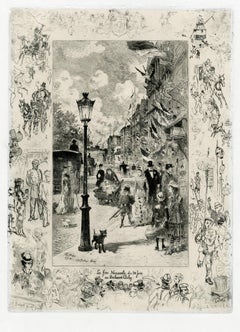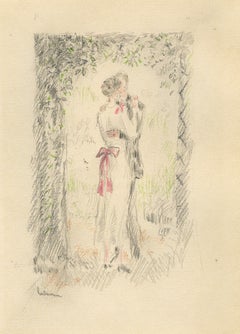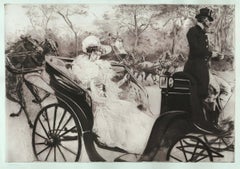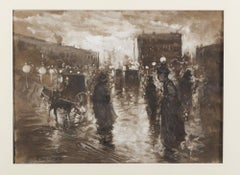Henry SommNight Life at the Moulin Rougec. 1890
c. 1890
About the Item
- Creator:Henry Somm (1844-1907, French)
- Creation Year:c. 1890
- Dimensions:Height: 9 in (22.86 cm)Width: 5.75 in (14.61 cm)
- Medium:
- Movement & Style:
- Period:
- Condition:Good original condition.
- Gallery Location:Fairlawn, OH
- Reference Number:Seller: FA47561stDibs: LU14015623302
Henry Somm
François Clément Sommier, best known under the pseudonym “Henry Somm” was born in Rouen in 1844. He attended the local École municipale des beaux-arts and went on in 1867 to Paris, where he studied under Isidore Pils (1813–75). He moved to Paris in 1860. Between 1873 and 1876, he made many engravings for the magazine Paris à l'eau-forte and then at the Cadart printing house. In 1879 and 1889, he participated in the Impressionist exhibitions from the Durand-Ruel gallery in Paris. He collaborated with the newspapers like Le Chat noir, La Charge, La Cravache, La Chronique parisienne, High Life, Frou-Frou and Le Rire. He wrote the comedy in one act La Berline de l'Émigré ou Jamais trop tard pour bien faire, created for Le Chat noir on December 25, 1885. Somm left a large number of drawings and watercolors of Paris made in plein air.
- ShippingRetrieving quote...Shipping from: Fairlawn , OH
- Return Policy
More From This Seller
View All1870s French School Figurative Prints
Etching
1920s Art Deco Figurative Drawings and Watercolors
Color Pencil
1920s Art Deco Figurative Drawings and Watercolors
Color Pencil
Early 1900s Art Nouveau Figurative Prints
Drypoint, Etching, Aquatint
Early 1900s Art Nouveau Interior Prints
Drypoint
1920s Modern Landscape Prints
Lithograph
You May Also Like
Late 19th Century Art Nouveau Figurative Prints
Etching
1890s Modern Figurative Drawings and Watercolors
Mixed Media
1910s Mixed Media
Mixed Media
1910s Naturalistic Figurative Prints
Drypoint
Early 1900s Impressionist Figurative Prints
Laid Paper, Intaglio, Etching
Mid-20th Century Art Nouveau Figurative Drawings and Watercolors
Pastel, Gouache
